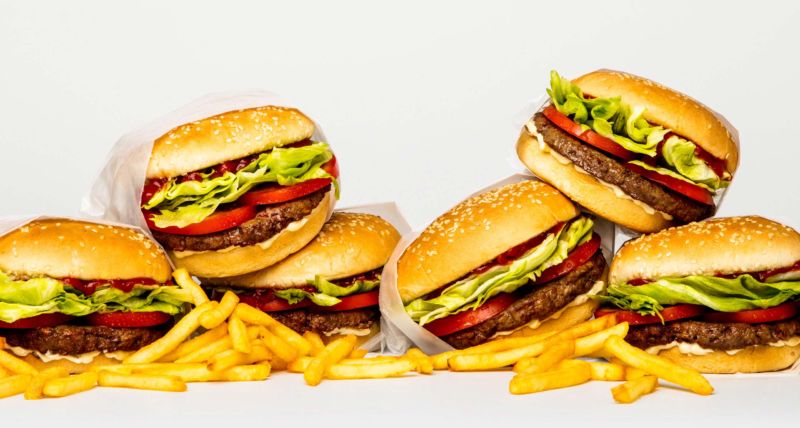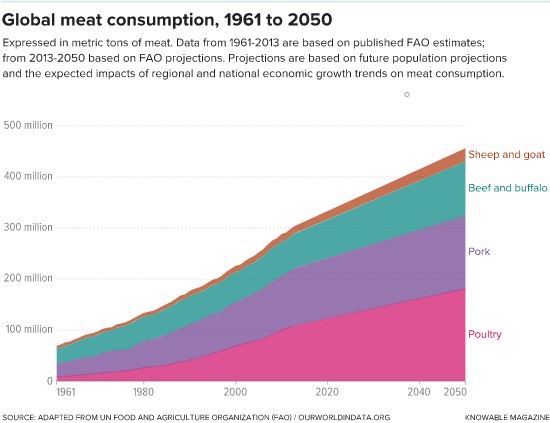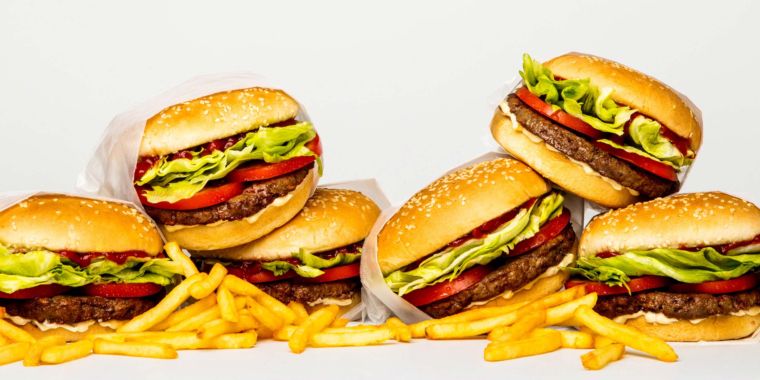
If you’re an environmentally aware meat-eater, you probably carry at least a little guilt to the dinner table. The meat on our plates comes at a significant environmental cost through deforestation, greenhouse gas emissions, and air and water pollution—an uncomfortable reality, given the world’s urgent need to deal with climate change.
That’s a big reason there’s such a buzz today around a newcomer to supermarket shelves and burger-joint menus: products that look like real meat but are made entirely without animal ingredients. Unlike the bean- or grain-based veggie burgers of past decades, these “plant-based meats,” the best known of which are Impossible Burger and Beyond Meat, are marketed heavily toward traditional meat-eaters. They claim to replicate the taste and texture of real ground meat at a fraction of the environmental cost.
If these newfangled meat alternatives can fill a large part of our demand for meat—and if they’re as green as they claim, which is not easy to verify independently—they might offer carnivores a way to reduce the environmental impact of their dining choices without giving up their favorite recipes.
That could be a game-changer, some think. “People have been educated a long time on the harms of animal agriculture, yet the percentage of vegans and vegetarians generally remains low,” says Elliot Swartz, a scientist with the Good Food Institute, an international nonprofit organization that supports the development of alternatives to meat. “Rather than forcing people to make behavior changes, we think it will be more effective to substitute products into their diets where they don’t have to make a behavior switch.”
There’s no question that today’s meat industry is bad for the planet. Livestock account for about 15 percent of global greenhouse gas emissions both directly (from methane burped out by cattle and other grazing animals and released by manure from feedlots and pig and chicken barns) and indirectly (largely from fossil fuels used to grow feed crops). Indeed, if the globe’s cattle were a country, their greenhouse gas emissions alone would rank second in the world, trailing only China.
Worse yet, the United Nations projects that global demand for meat will swell by 15 percent by 2031 as the world’s increasing—and increasingly affluent—population seeks more meat on their plates. That means more methane emissions and expansion of pastureland and cropland into formerly forested areas such as the Amazon—deforestation that threatens biodiversity and contributes further to emissions.

Global demand for meat continues to rise with little sign of slowing. Much of the increase comes from middle-income countries, where consumers use their increasing wealth to put more meat on their plates.
Not all kinds of meat animals contribute equally to the problem, however. Grazing animals such as cattle, sheep, and goats have a far larger greenhouse gas footprint than non-grazers such as pigs and chickens. In large part that’s because only the former burp methane, which happens as gut microbes digest the cellulose in grasses and other forage.
Pigs and chickens are also much more efficient at converting feed into edible flesh: Chickens need less than two pounds of feed, and pigs need roughly three to five pounds, to put on a pound of body weight. (The rest goes to the energy costs of daily life: circulating blood, moving around, keeping warm, fighting germs, and the like.) Compare that to the six to 10 pounds of feed per pound of cow.
As a result, the greenhouse gas emissions of beef cattle per pound of meat are more than six times those of pigs and nearly nine times those of chicken. (Paradoxically, grass-fed cattle—often thought of as a greener alternative to feedlot beef—are actually bigger climate sinners, because grass-fed animals mature more slowly and thus spend more months burping methane.)








